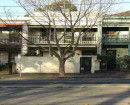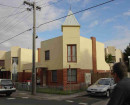HODDLE SURVEY TREE, KEW GOLF CLUB
120B BELFORD ROAD KEW EAST, BOROONDARA CITY
-
Add to tour
You must log in to do that.
-
Share
-
Shortlist place
You must log in to do that.
- Download report


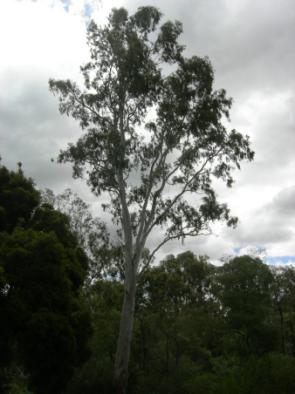


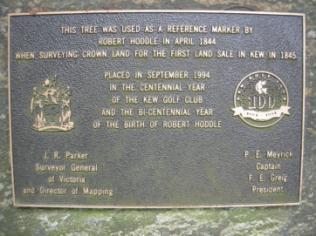
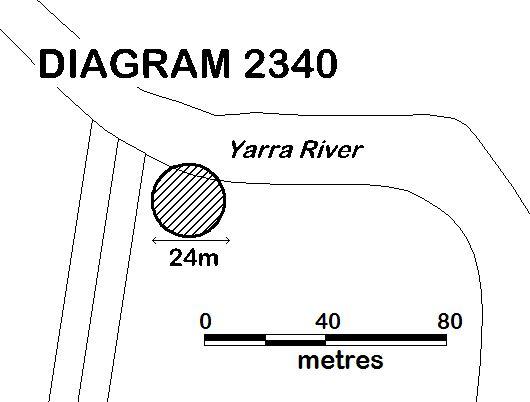
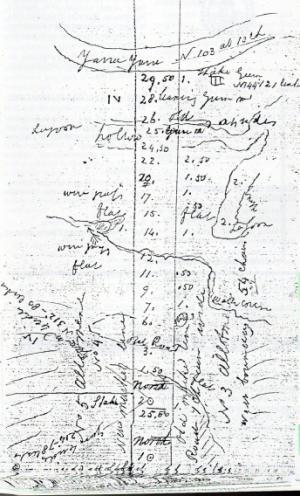
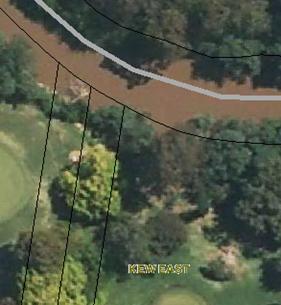
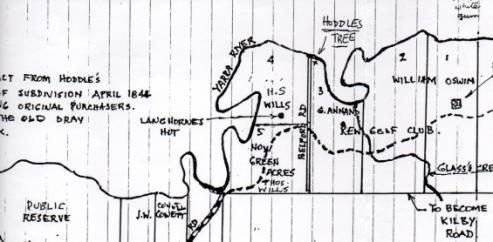
Statement of Significance
What is significant?
How is it significant?
Why is it significant?
-
-
HODDLE SURVEY TREE, KEW GOLF CLUB - History
The River Red Gum (Eucalyptus camaldulensis) known as the Hoddle Survey Tree was used in April 1844 as a reference marker by the Government surveyor Robert Hoddle when he surveyed crown land for the first land sales in Kew in 1845. Hoddle's 1844 field book shows the location of the tree south of the Yarra River notated with '1. Stake Gum'. In 1994 John Parker, Surveyor General of Victoria, confirmed the identity, location and history of this tree. [Ref: Traverse, February 1994, pp. 8-9]. Known and fixed reference points are critical to the surveying of land. Hills or trees were often used prior to modern surveying techniques. For example in 1837 Batman's Hill was used for the survey of central Melbourne.
Eucalyptus camaldulensis is a species noted for its longevity, and the Hoddle Survey Tree is believed to be over 300 years old.
Robert Hoddle (1794-1881) arrived in Port Phillip (later Victoria) in March 1837, and was appointed senior surveyor. From 1837 Hoddle was Officer-in-Charge of the Port Phillip Survey Department and became the first Surveyor General of Victoria in 1851. He is a central figure in the history of surveying, cartography and geography in Victoria.
The period 1837 to 1851 saw much survey work by Hoddle and his survey team. It was a period of expansion in terms of population and the discovery of gold in 1851 required that land be surveyed for orderly use. Hoddle's first map of Melbourne was completed in March 1837. By 1838 Hoddle had surveyed and planned Geelong and later surveyed many country areas of Victoria. Hoddle is remembered for his significant role in laying out the design of the central business district of Melbourne with wide major streets and narrow secondary lanes. His plan allowed for impressive boulevards and many public parks and gardens that are a feature of Melbourne today.
References
Old Survey Marks & Monuments, Traverse, February 1994, pp. 8-9
HODDLE SURVEY TREE, KEW GOLF CLUB - Plaque Citation
This River Red Gum was used by the surveyor Robert Hoddle in April 1844 as a reference marker for the first land sales in Kew. It is the earliest remaining survey tree in Victoria.
HODDLE SURVEY TREE, KEW GOLF CLUB - Assessment Against Criteria
The Hoddle Survey Tree is significant at the State level for the following reasons:
The 1844 Hoddle Survey Tree is historically significant and rare as the earliest known remaining survey tree in Victoria. It also predates all known built survey markers in Victoria. Known and fixed reference points are critical to the surveying of land. Hills or trees were often used prior to modern surveying techniques. [Criteria B]
The Hoddle Survey Tree is historically significant for its association with Robert Hoddle who used this remnant River Red Gum as a survey marker in April 1844 for the Kew subdivision. From 1837 Hoddle was Officer-in-Charge of the Port Phillip Survey Department and became the first Surveyor General of Victoria in 1851. He is a central figure in the history of surveying, cartography and geography in Victoria. [Criterion H]HODDLE SURVEY TREE, KEW GOLF CLUB - Permit Exemptions
General Exemptions:General exemptions apply to all places and objects included in the Victorian Heritage Register (VHR). General exemptions have been designed to allow everyday activities, maintenance and changes to your property, which don’t harm its cultural heritage significance, to proceed without the need to obtain approvals under the Heritage Act 2017.Places of worship: In some circumstances, you can alter a place of worship to accommodate religious practices without a permit, but you must notify the Executive Director of Heritage Victoria before you start the works or activities at least 20 business days before the works or activities are to commence.Subdivision/consolidation: Permit exemptions exist for some subdivisions and consolidations. If the subdivision or consolidation is in accordance with a planning permit granted under Part 4 of the Planning and Environment Act 1987 and the application for the planning permit was referred to the Executive Director of Heritage Victoria as a determining referral authority, a permit is not required.Specific exemptions may also apply to your registered place or object. If applicable, these are listed below. Specific exemptions are tailored to the conservation and management needs of an individual registered place or object and set out works and activities that are exempt from the requirements of a permit. Specific exemptions prevail if they conflict with general exemptions. Find out more about heritage permit exemptions here.Specific Exemptions:PERMIT EXEMPTIONS
It should be noted that Permit Exemptions can be granted at the time of registration (under s.42(4) of the Heritage Act). Permit Exemptions can also be applied for and granted after registration (under s.66 of the Heritage Act)
General Condition: 1.
All exempted alterations are to be planned and carried out in a manner which prevents damage to the fabric of the registered place or object.General Condition: 2.
Should it become apparent during further inspection or the carrying out of works that original or previously hidden or inaccessible details of the place or object are revealed which relate to the significance of the place or object, then the exemption covering such works shall cease and Heritage Victoria shall be notified as soon as possible.General Condition: 3.
All works should be informed by Conservation Management Plans prepared for the place. The Executive Director is not bound by any Conservation Management Plan, and permits still must be obtained for works suggested in any Conservation Management Plan.General Conditions: 4.
Nothing in this determination prevents the Heritage Council from amending or rescinding all or any of the permit exemptions.General Condition: 5.
Nothing in this determination exempts owners or their agents from the responsibility to seek relevant planning or building permits from the relevant responsible authority, where applicable.Specific Exemptions
. The process of gardening, including mowing, turf works, removal of dead plants (excluding the Survey Tree), disease and weed control, and maintenance to care for existing plants
. Management of trees in accordance with Australian Standard; Pruning of Amenity Trees AS 4373-2007
. Management of trees in accordance with Australian Standard; Protection of Trees on Development Sites AS 4970-2009.
. Subsurface works involving the installation, removal or replacement of watering and drainage systems or services 1m beyond the canopy edge of the River Red Gum in accordance with AS4970.
. Removal of plants listed as noxious weeds in the Catchment and Land Protection Act 1994.
. Vegetation protection and management of possums and vermin.
HODDLE SURVEY TREE, KEW GOLF CLUB - Permit Exemption Policy
Preamble
The purpose of the Permit Policy is to assist when considering or making decisions regarding works to a registered place. It is recommended that any proposed works be discussed with an officer of Heritage Victoria prior to making a permit application. Discussing proposed works will assist in answering questions the owner may have and aid any decisions regarding works to the place.
The extent of registration of the Hoddle Survey Tree on the Victorian Heritage Register affects the whole place shown on Diagram 2340 including the River Red Gum and land.
Under the Heritage Act 1995 a person must not remove or demolish, damage or despoil, develop or alter or excavate, relocate or disturb the position of any part of a registered place or object without approval.
If a person wishes to undertake works or activities in relation to a registered place or registered object, they must apply to the Executive Director, Heritage Victoria for a permit. The purpose of a permit is to enable appropriate change to a place and to effectively manage adverse impacts on the cultural heritage significance of a place as a consequence of change. If an owner is uncertain whether a heritage permit is required, it is recommended that Heritage Victoria be contacted.
Permits are required for anything which alters the place or object, unless a permit exemption is granted. Permit exemptions usually cover routine maintenance and upkeep issues faced by owners as well as minor works. They may include appropriate works that are specified in a conservation management plan. Permit exemptions can be granted at the time of registration (under s.42 of the Heritage Act) or after registration (under s.66 of the Heritage Act).
It should be noted that the addition of buildings and structures to the registered place requires a permit, unless a specific permit exemption is granted.
Conservation management plan
It is recommended that a Conservation Management Plan is developed to manage the place in a manner which respects its cultural heritage significance.
Cultural heritage significance
Overview of significance
The cultural heritage significance of the Hoddle Survey Tree lies in the tree being the earliest known remaining survey tree in Victoria.
-
-
-
-
-
WOBURN COTTAGE
 Banyule City
Banyule City -
ANNANDALE
 Banyule City
Banyule City -
HOUSE
 Banyule City
Banyule City
-
3 Sherwood Street
 Yarra City
Yarra City -
Archaeological site
 Southern Grampians Shire
Southern Grampians Shire -
BLACKWOOD HOMESTEAD COMPLEX AND CEMETERY
 Southern Grampians Shire
Southern Grampians Shire
-
-







